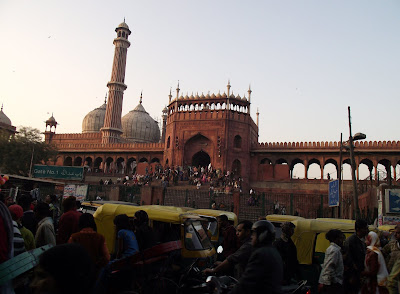
Visiting the Taj Mahal is a seemingly requisite experience for visitors to India. So like good little conformist tourists, R. and I traveled to Agra to see the famed building for ourselves. But while most people's visit to India's most well-known landmark is defined by the sticky heat Agra experiences most of the year, our experience was decidedly more chilly! Not many visitors to the Taj Mahal come wearing down jackets and scarves wrapped around their heads.
We arrived before dawn. The morning fog resulted in no spectacular sunrise, but rather a gradual lightening of the white building. The Taj Mahal is beautiful both from a distance and up close, where the intricate marble-work can be seen. For the first hour, the complex was almost empty, and we enjoyed roaming the property and appreciating it from every angle.


A lot of visitors to Agra see the Taj Mahal and then leave immediately, on to other cities as part of a tour. But there are 4-5 other major sites of interest in Agra, including Agra Fort and several tombs and monuments, some of which we visited.
Another much remarked-on characteristic of Agra is the persistence of the numerous salesmen and touts lining the entrance of every sight. Check out the awesome video (posted below) of us running the gauntlet of hopeful salesmen waving peacock fans, stone elephants and camels, tiny chess boards, post cards, books, etc. Video credit goes entirely to R. who filmed, directed and edited this snippet!
And finally, some of the awesome beasties we met during our excursion.













